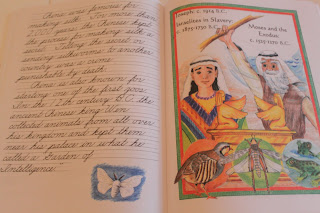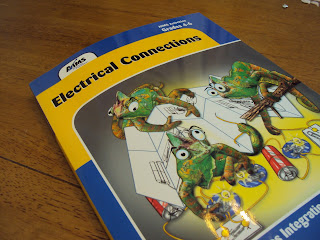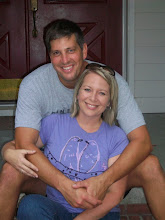People often ask me, "So what curriculum do you use?" This is not an easy question to answer! I have to confess....I'm a hoarder. Not so much when it comes to giraffe figurines or back issues of Nat Geo. But when it comes to educational products, books, and curriculum, I'm an addict.
Here are my favorite things that I have used and love:
Notebooking Pages from http://www.notebookingpages.com/ (Become a Treasury Member for unlimited access to thousands of notebooking pages on all topics) View a sample of just a few of the history ones here.
Homeschool in the Woods Timeline Figures for all eras of history
"Homeschool in the Woods" Time Travelers Activity Packs and Lapbook Kits. Amy Pak, the developer of these fine products is always adding new topics.
Go to http://www.homeschoolinthewoods.com/ to see all of her top-quality products.
"Homeschool in the Woods" incomparable World Maps and United States Maps. You won't find anything like this anywhere. Olde-World style maps, current and ancient, labeled, unlabeled, and a slew of bonus notebooking pages and country studies, including every country's flag in full color. Amy Pak, you are a genius!
Classical Conversations Foundations Teachers Manual. If you can't afford the tuition for CC (with everything else we do and buy, we certainly can't...), then get this Foundations manual from the CC website. It has great memory work for history, geography, science, grammar and Latin conjugations. You can also order their song CDs. Or, check YouTube. You'll often find CC children performing their memory work there and you can get the song tunes for the memory sentences. Voila!
Story of the World by Susan Wise Bauer (in four volumes, as well as the audiobook version--great for the car or for downloading on kids' iPods!)
Daily G.R.A.M.S. I gave up on trying to find a good grammar program. Daily GRAMS is something we do 4 days per week. If they don't know how to properly punctuate or capitalize sentences after doing these every day, they should be tarred and feathered. Also includes contractions, parts of speech, parts of a letter and analogies.
Draw Write Now! (These are for print handwriting practice with corresponding drawing lessons. My kids have moved on to cursive, so I just photocopy the drawing lesson and retype the copywork in a D'Nealian cursive font, downloaded from http://www.font101.com/)
Draw and Write Through History (more copywork with drawing lessons, but these are already in cursive and lengthier for older students)
If you Lived.....(in Colonial Times, during the American Revolution, at the time of the Mayflower, etc.) This is an extensive book series and I'm sure you'll find something for whatever your studying. They are written at about a 3rd or 4th grade level but still great for older students to read independently.
AIMS Educational Company for science unit studies and experiments- we've used the Electrical Connections (electricity) and Head to Toe (human anatomy) volumes. I was introduced to this company when I reviewed the product below. I love that they include a CD-Rom with their books, so you don't have to flatten out the books on the copier. You just print multiple pages from the CD of whatever your kids need that day. The experiments are fascinating and easy, and their customer service people really know what they are talking about. They walked us through an experiment on the phone for over 10 minutes and were glad to do it. Really impressed with AIMS.
Smart About Art book series- perfect for elementary students on a variety of artists. Beautiful color illustrations, paperback and very affordable.
Getting to Know the World's Greatest Artists
Getting to Know the World's Greatest Composers, both by Mike Venezia
Any book by Ingri and Edgar D'Aulaire--TIMELESS stories with moral undertones. Beautiful illustrations without being flashy. Love these books, but they are quite expensive for paperback ($18) and hard to find in hardcover. This is where the public library comes in handy :)
The Institute of Excellence in Writing--tremendous writing program. They really do it better than anyone else. Start with the "Structure and Style" DVDs to get acquainted with the program. Once you learn the process, you can use just about any paragraph from any book you choose to help students learn to summarize via keyword outlining. Or use their subject-related writing lessons. Everything from American History to Medieval History to Fables, Rockets, Myths, etc.!
Beautiful Feet literature guides. Guided unit studies using only the best literature with provoking questions that include character. This one deals with wonderful horse books, but we've also done the one on Ancient History and Early American History. There are many more.
Kids Discover magazine: Haven't found a better magazine yet that holds their interest for so long. I remember these coming to the house when I was in high school for my younger brother and sister, however I always found interesting articles to read! Now, I have nearly 100 back issues and they just keep coming! Check ebay for everything from Shakespeare to The Ice Age to Chocolate!
Apologia Science textbooks- we are using the Young Explorer series; we've completed Zoology I, Zoology II and are in the middle of Human Anatomy . They are as close as you can get to Charlotte Mason style learning. Very conversational and tons of "creation-confirmation" moments.
Tapestry of Grace--our main curriculum of choice. A bit intense at times, but oh so thorough. I say "intense" in the nicest way. It was written by a phenomenal woman, Marcia Sommerville, who combines the very best literature, with sound church history, a complete writing program, fine arts instruction, history-based activities, history instruction, vocabulary, government, philosophy, and world-view. And breaks them down into the classical education model ( a 4-year curriculum that you use with all your children together, no matter their age). Lower Grammar students (K-about 3rd), Upper Grammar students (about 4th-6th), Dialectic students (middle school) and Rhetoric students (high school), ALL study the same topics, but have their own on-level reading and assignemnts to accomplish. After Year 4, the students cycle through the general topics again, but now they are older, in a different bracket, and doing completely different things. BUT, they are now solidifying what they skimmed when they were younger. Tapestry of Grace provides us with the framework we need to stay on track, wonderful vocabulary and activity choices and literature selections. It is meant to be a "buffet"--and we tend to overeat! This "map" shows how some of the subjects intertwine.
Usborne Encyclopedias (We have used the one for Ancient History and History of the World). They are what we would consider a "spine" to be used all year, running parallel to our history studies.
The DK Illustrated Childrens' Bible (the best one I've found--with beautiful illustrations and corresponding photographs that bring an ancient story relevant to modern times). For instance, it will show a modern Jewish man blowing a shofar. You will see what flax looks like. It will show real cedar trees when talking about Lebanon. You get the picture.
Dover Coloring Books--it may sound silly for older children, but these intricate black-line drawings of historical topics are perfect for students to color while you read aloud or listen to an audiobook. And they make sharp-looking additions to your history notebook. (Confession: They also make historical paper dolls and I own the Little Women and Pride & Prejudice ones. LOL.)
The Reading Teacher's Book of Lists
The Vocabulary Teacher's Book of Lists
Educating the Wholehearted Child- This is the "Bible" of homeschooling. Just order it. Trust me. Mine is sitting next to me right this second. It is a warehouse of homeschool resources, info on homeschooling methods, book lists, scripture memorization lists, unique ideas on every topic, sound advice on parenting as well as education. This landed in my lap this year when I was asked to review it. I'm so glad we found each other. This book is my literary soulmate (sorry, Little Women).
Daily Paragraph Editing by Evan Moor
Daily Handwriting Pratice by Evan Moor
Brain-Busting Lateral Thinking Puzzles by Sloane & Maclean. Puzzles in story form. You have to figure out the riddles. Great warm-up activities. I don't really use these enough and I should.
Spectrum "Reading" workbook- I felt like my kids weren't getting enough reading comprehension practice. This workbook gives 4 stories on a specific theme and asks pertinent questions to assess their comprehension. For instance, one story may be about Japanese baseball, the next might be about bonsai trees, the next a modern kite festival, then a recipe for a Japanese dish. These are pretty well done and can be easily purchased at Barnes and Noble or other bookstores.
Who Was? biography series (everyone from Harriet Tubman to Elvis Presley, Jim Henson to Daniel Boone). Affordable, most about 100 easy-to-read pages with sketches and historical reference points.
Classic Starts- hardback fiction selections. Abridged, but not watered down. I feel it gives students an edge when they get in high school, to already be familiar with stories like Moby Dick, Great Expectations and Phantom of the Opera if they've read an abridged version as a young child. Available from Barnes and Noble or online.
Timeline Notebook available from Miller's Pads and Paper: http://www.millerpadsandpaper.com/ This is where you can cut and paste your timeline figures from Homeschool in the Woods! Lots of lines to add extra information and all the years are blank so you can fill in the appropriate years.
Abeka flash cards. We have them all!
Any science experiment book written by Janice Van Cleave. Most projects can be completed with household items you already have on hand.
Make It Work! activity books--we have the ones on Ancient Egypt, Space, Native Americans, Time, Flight, etc.
Teaching Textbooks online math curriculum. Thank you to my friends who let me borrow theirs this year. We are loving the online-style and interchangeable avatars that shout encouragement with each problem. Couldn't be happier, especially with an electronic gradebook built in!
Tune in Adventures (aka Adventures in My Mind)--I sold these when I was a manager with Discovery Toys. They are audio stories, with sound effects and FEELING, on DVD. They tell the stories of famous people, as told by Chris and Amy, a brother and sister who time travel to meet them. We've learned about Valentina Tereskova, Thomas Edison, Wilma Rudolph, Hillary and Norgay, Amelia Earhart and Captain Cook. Sound engineered by Disney, these are wonderful editions to your studies of any of these famous folks.
Ed Emberley art books (the thumbprint guy). But he's more than just thumbprint art! I got so excited when these arrived from Amazon this year, that I set out with a sketchbook and drew every single creature in the "Make A World" book. Wow, I never knew drawing could be so simple. A very do-able art lesson.
Usborne Book of Art Ideas, Art Skills, and Art Projects. You will want to own all of these. I've checked them all out of the library multiple times and wish I would have just bought them (I still might). They are unique in techniqes and ideas. There's just something about them that makes them classic reference tools for art instruction.
Art Calendars for ripping apart and laminating famous artwork-- look for them in February when they are clearanced.
Laminated Maps of the USA and the World--as large as you can find them. Then buy a box of map pins at the office supply store and mark the places you study (or receive penpal letters from, or support with missions, etc.)
Chart paper -full-size and half-size. I use these for writing memory work each week and mounting on the wall. Some dry erase easels will have a clip at the top for mounting things there as well. Some are magnetic--I wish mine was :(
Wrap Ups (these are the plastic manipulatives with the shoelaces that are used to drill facts, such as multiplication tables and state capitals)
Close Up art card games. It's like Old Maid, but one half of the pair has just a close up of the original painting. You have to really look closely! We have the ones from the Metropolitan Museum, the Guggenheim Museum and MoMA. They are a great Friday activity!
Veritas Press History Cards. Okay, just about everything in the Veritas Press catalog is beyond awesome. Their cards are the pinnacle of memorization, mixed with important facts and beautiful artwork. Take the time to laminate them all with heavy lamination (not the flimsy laminate) and put them on a large metal ring. You will want to keep them until you die. And then bequeath them to your heirs.
Full-size dictionaries, pocket thesauri and rhyming dictionaries (for poetry writing)
Thinking Putty for kinesthetic learners. My kids couldn't survive without this--seriously. Even my self-diagnosed ADD husband has some for his office!
Quizmo bingo games for all disciplines such as fractions, decimals, division, etc.
River Crossing game by Thinkfun. Similar to Rush Hour. The problem cards have you set up your board in a certain way and you've got to cross the river using only certain planks in certain sizes to create a bridge. Great logic and critical thinking skills.
Mind Benders logic puzzles from the Critical Thinking Company. Teach a child to think logically and it is doubtful the world will be able to pull the wool over his eyes in other regards.
Mancala: This classic African game was part of our Ancient Egypt unit. Sure, you could make it with egg cartons and dried beans. But this version, which I purchased at Barnes and Noble when they were having a sale on games, is heirloom quality. The "stones" are actually carved wooden beads. The box is beautiful.
Backgammon. Again, a "thinking person's game" to add to their repetoire of party tricks.
Chess, great for a Middle Ages tournament day! But really, chess is good for strategy and the utmost in sophistication!
Metaforms Logic Puzzles. We do this on Fridays sometimes for math. The back of the project book is challeging for me, which means its a great product. Something to grow into.
Sequence for State Capitals (card game)
Parchesi (fun game and great for Ancient India study)
Great States game. Perfect geography game. Lots of activities and fun facts. It really helps them retain the position of the states.
Signing Made Easy- Mickey Flodin (sign language for kids). We had a lot of fun with Sign Language last year. We learned greetings, family members, Jesus Loves Me, and tons of animals. I would like to go back and learn more songs and scripture with the boys one day. One day....
Vocabulary Workshop by Sadlier-Oxford. I use this on weeks where I feel like the Tapestry of Grace vocabulary selections are either already mastered or way above what I feel my kids need to know right now. I saw one of these at a used book store and really like it. I ordered more through half.com. To figure out your child's level, go to the Sadlier-Oxford website, as they are labeled "Level Blue, Level Orange", and so forth.
Again, I have blasted you with a firehose of information. But isn't it fun to try new things for homeschooling? That's another thing I love. Nobody is telling me what to use or how to use it. You may have to get a part time job to pay for it all (as I have done this year), but I always say, you can resell it all at some point and pay for next year's stash.
Until next time,
Kimberly


















































































4 comments:
WOW!!
Okay. Yikes! Our oldest will be 4 in September and we are thinking about homeschooling when he is 5. But I am overwhelmes by this list. How much money would you say you spend annually? I want all of it, for Kindergarten! Ridiculous! I too love educational materials and will want to have all the options available! How much do I need to start???
Kristi, I buy nearly everything used. Check your area for "used curriculum sales" (usually volunteering to be a helper will give you first dibs or a deep discount on the product). Also, I would highly recommend attending a homeschool convention. You would gain a world of knowledge and get to browse all sorts of curriclum in the vendor's exhibit hall before buying anything. I shop half.com, ebay, www.homeschoolclassifieds.com and use the public library alot. Also, once you connect to a homeschool support group in your area, I'm sure there will be lots of opportunities to trade/sell/buy used items. We spend about $1000 per year on curriculum, books, field trips, memberships to museums, science centers, etc. Don't forget to take the teacher deduction on your taxes as well! Good luck and blessings on your homeschool adventure! I envy you starting from the beginning. My boys were 3rd and 5th grade when we pulled them from public school and I never got a chance to use some great products geared for early learners :(
Also, I worked at my local bookstore over the holidays and recently took in a 9 month old baby to watch during the day. In a month and a half, I have recovered all my expenses from homeschooling. Now, the money just pays for vacations and fun stuff we want to do--and the baby goes right along with us on field trips! Something to look into (although you may have your hands full with 3 under 6 years old!)
Post a Comment